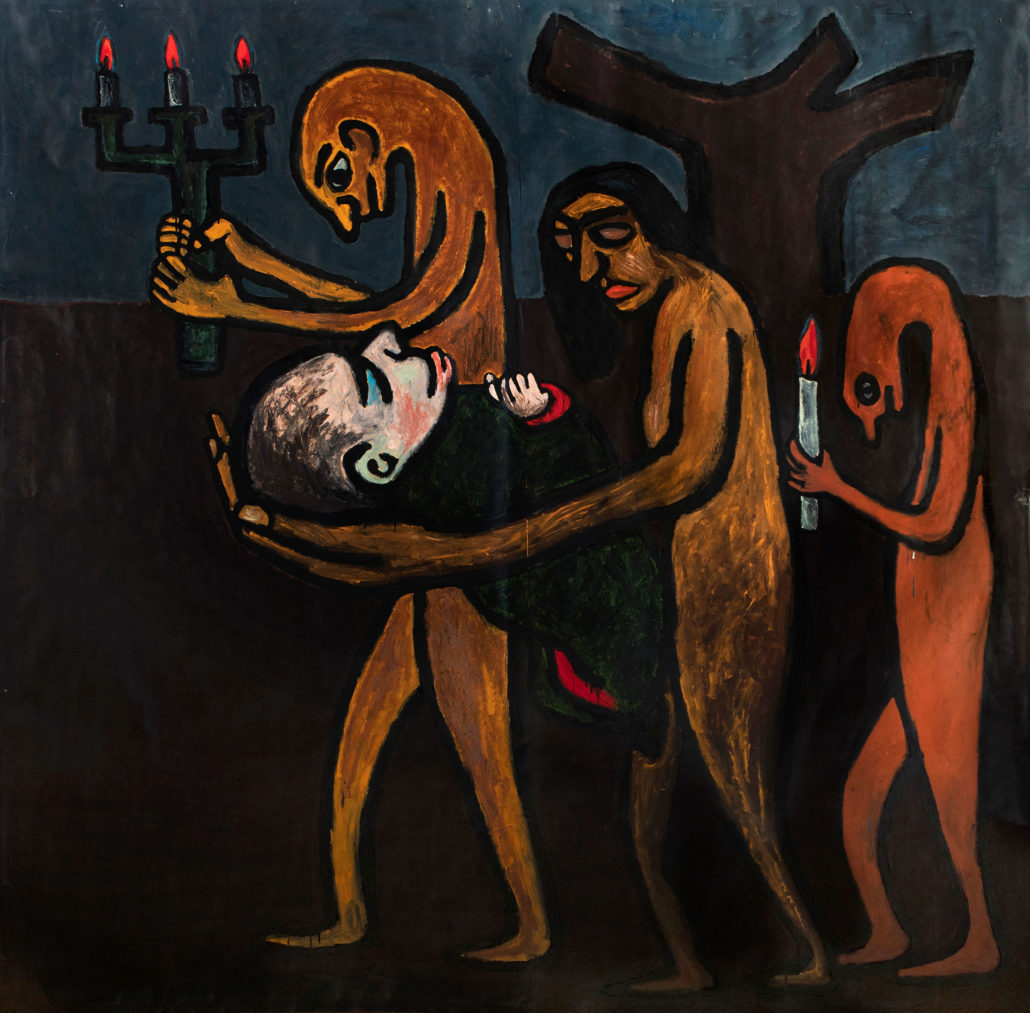The heartbreaking painting of Victor Mira
Considered by international critics as one of the great creators of Spanish art in the last decades of the 20th century, Víctor Mira reflected in his different artistic facets the existential torment that accompanied him throughout his life . Called transgressor, eccentric, visionary, rare, mystical and enlightened, Mira was above all an artist who delved through his art into the depths of the human being. His work, as heartbreaking as poetic, acquires a violent spirituality whose feeling is reflected in this revealing statement: “ as a man happiness is desired, as an artist I am not interested and I am dominated by the artist “ . Denying a happiness that he considered childish and sterile, Víctor Mira transformed pain into a philosophy of life that would undoubtedly be his everlasting source of inspiration. And it is precisely this aspect that moves us in his work: the brutal and sincere contemplation of a soul, that of the artist, in which loneliness, inner ordeal and death are revealed to us as the only and unappealable certainties of life.
Born in Zaragoza, Mira developed her career between Spain and Germany in a kind of sought-after exile, which gave birth to one of the most intimate and honest iconographic and expressive repertoires of all those who make up contemporary Spanish art. In her creative universe, Mira constantly goes to the cultural references that she absorbed with voracious curiosity from literature, film and music, as well as from religion and philosophy, thus forming a particular compendium of concerns, reflections and obsessions. that are ostensibly manifested in his pictorial works.
His beginnings rooted in surrealism soon gave way to expressionist forms that began to make an appearance in the mid-70s, when we can already observe the influence of the Spanish José Gutiérrez-Solana, especially in the sordid of the subjects represented. This is the case of the monumental “Moment of a family” where the awareness of the finite nature of time that runs through all of his work throws us into an abyss so fertile for Mira, as destructive, that it reminds us of the inescapability of death. Like a macabre paradox, the particular demon that for Victor Mira was death becomes his own underside, the very engine of life where he finds inspiration, love and poetry.
Around 1979, his neo-expressionist stage began, which lasted until the mid-1990s. During this period he will produce, always working in series, his best known works such as Montserrat, Crucifixions, Caminantes, Bachcantatas, and, of course, Stylites. Under the substrate of a fierce material expressionism, Mira establishes an intense dialogue with the history of art itself that emerges from a latent roots with the Spanish baroque tradition, especially in its most tragic and gloomy aspect. In works like Dust, related to his crucifixions and stylites, he takes the feeling of isolation, anguish and death to its maximum expression, reducing the color palette and object references until eliminating any superfluous element that hinders his path towards spiritual transcendence. In this sense, Mira represents in himself the figure of the walker who, as the romantic Caspar David Frierich did in “Monk in front of the Sea”, finds himself on a perpetual mental and physical journey towards communion with the Cosmos.

After paintings like this, it is equally inescapable to highlight the deep mark that Francisco de Goya engraved on him, and especially the shocking and terrible pathos of his unmistakable black paintings. In a clear reference to the famous work of the La Mancha painter, Mira pays homage to “the lonely Goya who grew up like a dog in the desert,” that half-sunken dog that struggles to keep his head afloat with which Goya, in a lucid representation universal of the human condition, anticipates more than a century to the expressionist language.
Finally, as we pointed out previously, the cinematographic references crystallize in their devotion to Luis Buñuel who with films like “Simón del Desierto” inspired the creation of his characteristic lonely stylites. Like Buñuel, Mira does not hesitate, despite her atheistic condition, to make use of the symbols and stories that make up the Christian religious repertoire to express her own convictions.
In his works Mira discovers a painter with the soul of a poet, an extremely sensitive man, who meditated and questioned everything, including the very meaning of his existence, which, in 2003, he decided to end. As a culmination of the tragic evolution that involved his entire life and work, Mira receives, the same year of his death, the recognition of the best living Spanish artist at the ARCO fair
At a time when the great deeds and heroic feats of romanticism seem to have no place, Víctor Mira embodied like no one else the figure of the outsider, the cursed artist who, as can be seen from the image of his characters, lives apart from everything and everyone , following only the dictates of a deeply restless and nonconformist spirit that carried with it to the last consequences. That complex spirit with which he gave birth to an exalted metaphor of death, as lyrical and beautiful as it is sordid and stark, in which it is undoubtedly one of the most passionate and solid artistic corpus of contemporary Spanish art.



